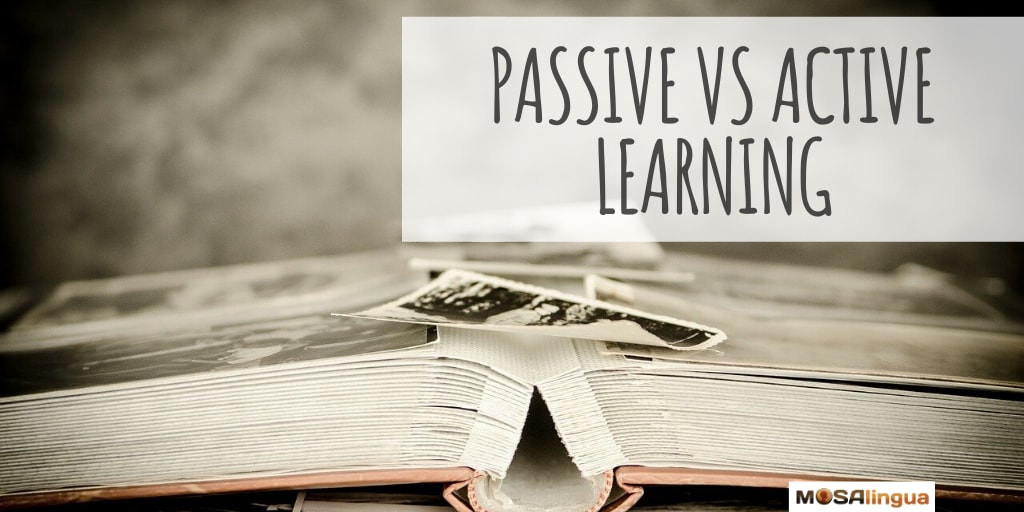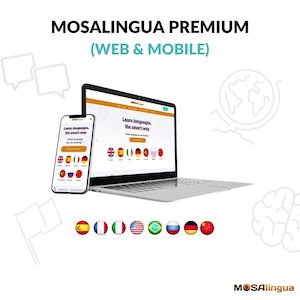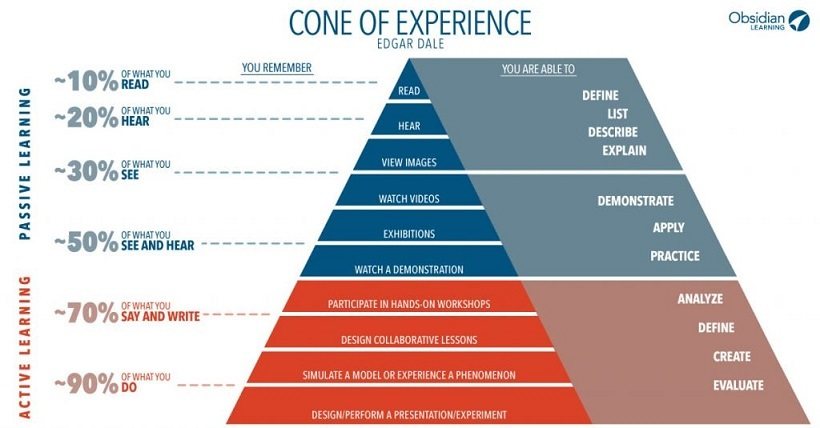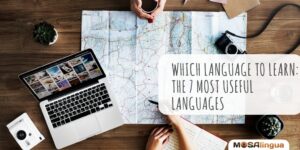The brain has an amazing capacity for storing memories. It’s like a muscle: the more you use it, the more effective it becomes. Unfortunately, our memory isn’t perfect, and most people can’t recall everything they’ve done, seen, or learned. Thankfully, there are a number of techniques that can help you improve your memory, which makes learning a new language that much easier. Depending on what you’re doing, you use either passive or active learning. So what’s the difference, and which is more effective? Keep reading to find out.

Passive and Active Learning
Neurons play a central role in both passive and active learning. Did you know that most of your neurons form when you’re a baby? But new ones also continue to form as you age. As we learn and experience new things and retain new information, neurons form connections between themselves, which encodes the information and allows us to access it when needed. In other words, if you work more on your vocabulary in a variety of different contexts (speaking with a friend, playing word games, watching a movie, listening to a podcast, etc.), your neurons will form more connections, and you’ll be able to better remember different words.
What is passive learning?
Imagine you’re reading an article on whale migration, and then put it aside. At the time, you remember what the article is about. But two weeks later, if somebody were to ask you any of the key figures or main ideas, it’s very likely you’ll have forgotten most of them. Passive learning refers to learning through reading or listening. You take up information without using it.
Generally speaking, this type of information is stored in your short-term memory. When you learn new vocabulary by listening to a podcast, for example, without reviewing it or listening to it again, you’ll remember it that day and the next — but very quickly it will disappear from your memory, as your brain filters out what seems obsolete or useless.
What is active learning?
Active learning, on the other hand, means actively using and transforming the information so that you retain it longer. By repeatedly accessing the information and using it in different ways, you strengthen the connections of those neurons and tell your brain that the information is worth holding onto.
For example, you’re using your active memory when you practice in front of a mirror or speak with a conversation partner. You’re actively responding to the questions: What is it I’ve learned? What does it mean? How can I use this vocabulary, conjugation, or expression?
Start learning a new language today

Good news: we can help!
More good news: you can get started for free! Start your free trial now and for the next 15 days, take advantage of the most effective language learning method on the market!
Vocabulary flashcards, videos with subtitles, audiobooks, articles adapted to your level – with MosaLingua Premium (Web & Mobile), you’ll have access to all this and more. Get started right now. It’s free—and risk-free—to try!
How Do Active and Passive Learning Differ?
Let’s take a look at the Cone of Experience pyramid by Edgar Dale, a leading voice in learning.
Source: eLearning Industry and Obsidian Learning
Many of the memories you make first enter into your brain via passive learning. But to retain them, you still need to practice often and regularly. You can read and hear new words, watch videos or look at images, but then you’ll need to use that information to convert it to active learning: by saying, writing and doing. According to Peter C. Brown, author of Make It Stick!, a book of learning techniques and strategies, we lose about 70% of what we hear or read very rapidly, and a number of studies* have demonstrated that active learning is far more effective.
Passive vs Active Learning & Why Active Learning is More Effective
In one study conducted in 2011, researchers divided students into 4 groups:
- The first group was asked to read a text once.
- A second group studied the text four times, in 5-minute blocks.
- A third group read the article once and then created a concept map of the information.
- Finally, the fourth group had to read the text and write as much about it as possible in 10 minutes; they did this twice.
One week later, all the participants were tested on their knowledge of the article. The fourth group performed much better than the others, including those who had created a concept map. The process of asking oneself questions and answering them, testing one’s knowledge, is more effective than reading the same thing several times, or even transforming the information.
This is because it’s the most demanding of the four tasks. It requires more mental energy, and so your brain deems it more important. Going back over material helps to “anchor” it in your memory, which greatly increases your ability to remember it. Furthermore, if you’re not able to answer a particular question about what you’re trying to remember, you’ll know that it’s time to revisit or relearn that information.
Learning with flashcards
Based on this, one of the best ways to learn information and retain it in the long run is with flashcards. With a flashcard, one side has a question or prompt, and the answer is written on the back. By not having the answer readily available, you’ll have to think about and look for the information in your memory. That process is called active recall. This is a far more effective way to learn than passive memorization, even for the most difficult information. Plus, you can revisit them earlier if you’re having trouble, or later if you know them well.
The MosaLingua apps use just this system of flashcards. After seeing whether you had the right answer or not, the app asks how easily you were able to come up with the information. You can choose “Perfect” if you know it like the back of your hand, “Good,” “Difficult,” or “Again,” if you had no idea. Based on your responses, the app will automatically schedule the cards for review at the correct time.
Study with a Spaced Repetition System (SRS)
A spaced repetition system (SRS) is based on active learning techniques, and allows you to efficiently review and solidify vocabulary in your long-term memory. Learning programs that use this system, like our MosaLingua apps, schedule the appropriate review sessions based on your current knowledge and how you evaluate your performance with each flashcard. One of the biggest advantages is that the system is easy to use and learn — all that’s required of you is to be consistent!
As you learn, don’t hesitate to play with the words and use them in different situations. Vary your practice sessions, and most of all, have fun! And remember that, even if active learning is more effective, passive memorization can help make use of your downtime. If you’d like to improve your memory further, there are lots of ways to adjust your nutrition and lifestyle.
*Sources: 2019 study / 2011 study / 2010 study / 2013 study





Comments